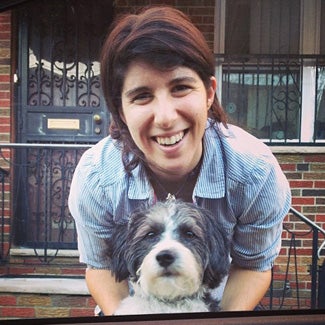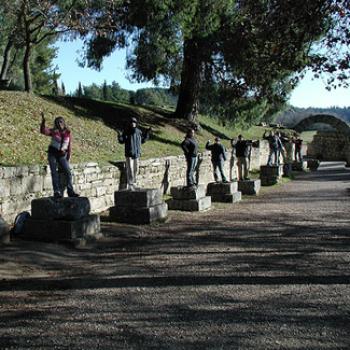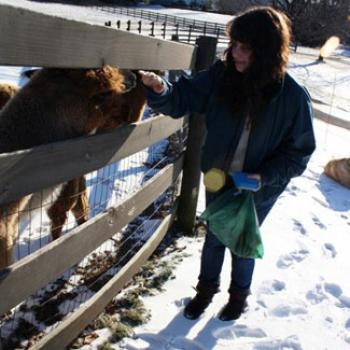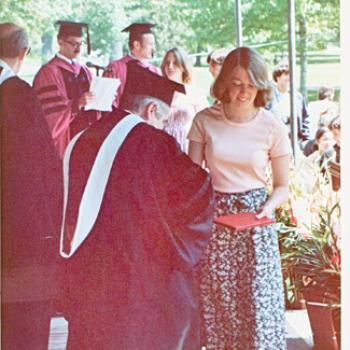On becoming a writer
Zoe Gould ’14
“This piece was not just a reflection of my own competency, like other formal essays had been; this was someone else’s story entirely.”

By my second semester of senior year at Oberlin College I was fully committed to the illusion that I was prepared for the real world. I had read and vaguely understood a play by Samuel Beckett, was armed with a detailed history of oppression on multiple continents, and could wear a jean jacket with confidence. My boxes were checked. Undoubtedly, the real world was eagerly awaiting my presence.
As an English major, it felt morally imperative to take a rhetoric and composition course before I graduated. A crucial goal for my last few months of personal growth was to be more honest with myself. My sentences were riddled with unnecessary commas, my clauses dribbled on for days, and if I was being truly honest with myself — I had no idea what a predicate was. My jean jacket would only get me so far, I told myself, I had to face these issues before I accepted a diploma and, for all intents and purposes, told the world I was a worthy, intelligent citizen that it should value and appreciate.
I scoured Presto for the least dry rhetoric and composition course I could find — Writing for the Arts, taught by Anne Trubek. The first day was atypical. There were nine students, varying from a duo of seemingly inseparable opera singers to dreadlocked metal heads and Oberlin Review editors. This story begins as most stories do: with a motley crew.
Anne was no exception. She introduced herself as the editor-in-chief of Belt Magazine and told us how she had turned down tenured professorship in order to run the magazine and small press attached to it. Throughout the course of the class, we were charged with maintaining a consistent blog on a beat of our choosing, and experimenting with five different writing styles prevalent in arts journalism: formal analysis, review, trend, personal essay, and profile. I struggled with these guidelines. I could not recede into the depths of a book or play or pick apart a character’s motivations in the safety of a library carrel. I had to look at a piece of art, go to a show, monitor the Internet for patterns, and meet local professionals. As admittedly bratty and naïve as it sounds now, I found the idea exhausting. Until I met Aaron.
Aaron Dilloway was my last chance. I had fallen hopelessly behind on finding a local artist to profile and my brown-nosing tendencies were sounding shrill, paranoid alarms in my brain. The assignment was to be posted online and critiqued by my classmates next week and all of my personal contacts had fallen through, leaving me nowhere. It occurred to me that a record store had recently opened up on College Street, and I checked my watch to make sure it was still open. I ran across campus, up the stairs from the street, and into the small, carpeted store. I introduced myself, told Aaron about the requirements for my project, and he agreed to be my subject. I was to meet him there the next day to interview him and start outlining my profile piece.
I then went home and did what every college student since 1990 has done: I Googled him. Turns out, I was in further over my head than I had anticipated; Aaron was a minor celebrity in the music world. His band Wolf Eyes and solo album Modern Jester had garnered about as much fame as a noise musician can hope for. He had settled in Oberlin because his wife (who had incidentally been my professor two years prior) had secured a tenure-track position at the college. I was taking the reins of what I thought was a two-horse buggy and turned out to be a veritable cattle call.
The next few days with Aaron were unlike any I had experienced at Oberlin. The questions I had prepared were dead ends: dull and irrelevant. I mostly just hung around, chatted with him, let him play me records he loved, and watched him interact with locals and students. I took intermittent notes, jotted down verbatim quotes, and snapped hundreds of mental images of his mannerisms, details of the shop, and album art. Every day, Aaron became larger. His story grew exponentially and my online research educated me about the grandiose acclaim he seemed perfectly happy to glance over.
When the time came to write, I spent hours categorizing, rearranging, and fleshing out my notes into a chronological, honest, and accurate in the most biased terms, piece I could muster. It was the most fun I had had writing for any course. This piece was not just a reflection of my own competency, like other formal essays had been; this was someone else’s story entirely.
The piece weathered the critique well and Anne pulled me aside after class to talk. She urged me to edit a bit for accuracy and send the piece to her editor at Belt. “This is the kind of thing we like to publish,” she said.
The piece was picked up for Belt and ran two weeks later. Anne was pleased with the online response it provoked, and again, urged me to join more online networks to share my work. For the first time, I had “work." I had taken my first real step. A few months later, after graduation, the profile was chosen to appear in Dispatches from the Rust Belt: Best of Belt Year One, out in October 2014.
Just shy of my five month anniversary from graduating from Oberlin, I had become a published author. I joined Twitter. I still write for Belt, and I shop my “work” around elsewhere as well. I had wanted the Real World to usher me into its embrace. Instead, I found the Real World in a small shop above College Street and it gave me the chance of a lifetime.
Tags:
You may also like

On visiting Greece
“The beauty of the environment and the ancient sites we visited convinced me to keep studying Classics; I wanted to know more about who built the sanctuaries at Epidaurus and the temples at Delphi,...
Eush Tayco ’09

On being an art history major
“Thirteen years later, as a freshman in college, I found the perfect outlet for my misguided artistic endeavors: art history.”
Georgia Horn ’12

On leaving Oberlin and returning
“What I thought must be standard fare at all colleges - the excellent music, the spectacular art museum, the earnest students - proved not to be standard at all.”
Emily Nord McClintock ’76